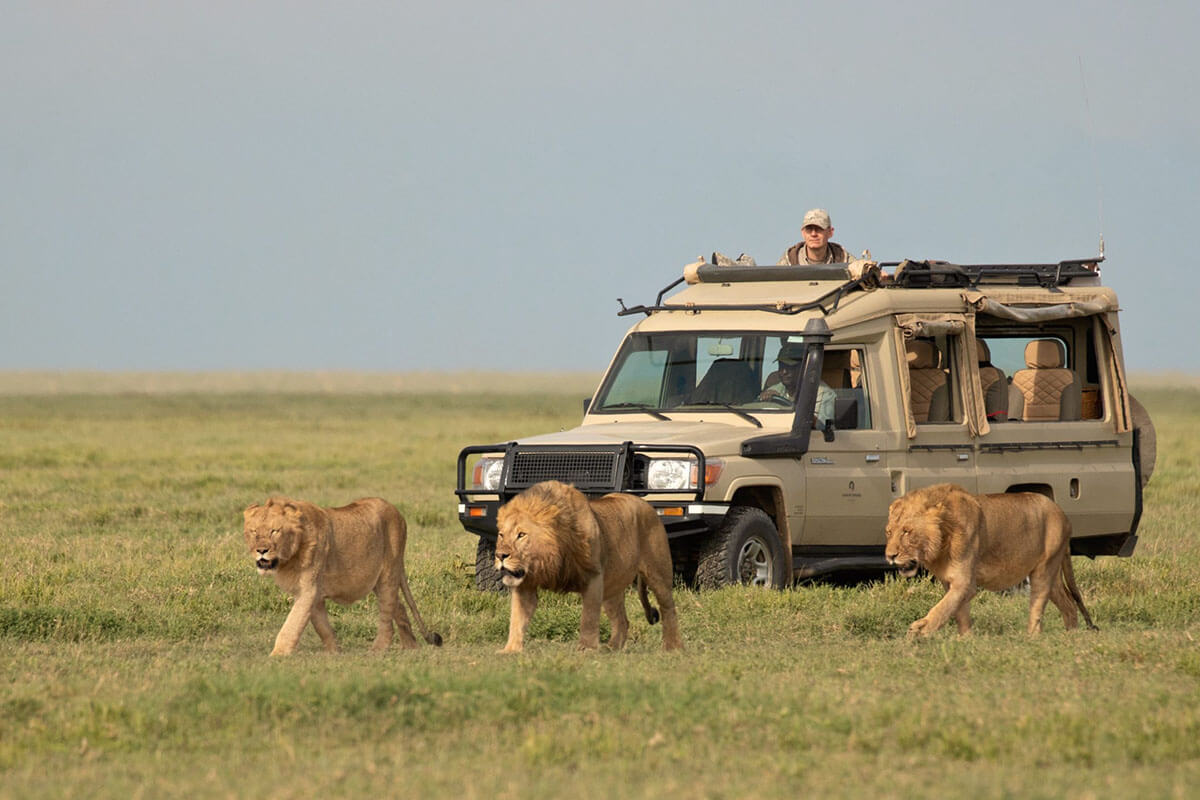acf domain was triggered too early. This is usually an indicator for some code in the plugin or theme running too early. Translations should be loaded at the init action or later. Please see Debugging in WordPress for more information. (This message was added in version 6.7.0.) in /home/kiliewda/public_html/wp-includes/functions.php on line 6121
The Serengeti is one of the most famous parks in Africa and is synonymous with wildlife and classic African scenery. It is Tanzania’s oldest park and a Unesco World Heritage Site. It is home to the spectacular wildebeest migration and offers top-class wildlife viewing throughout the year.
Every year, over 2 million wildebeest, zebra and gazelle migrate from the Serengeti to the Masai Mara Reserve in Kenya. If you’re there at the right time, you can spot herds of wildebeest and zebra stretching to the horizon.
The Serengeti is considered Tanzania’s best park. Big herds of buffalo, smaller groups of elephant and giraffe, and many antelope, such as eland, topi, kongoni and impala are resident at any time of the year. All three big cats are easily seen. Lion are often found on a kill. Cheetah are very common on the southeastern plains, while leopard can typically be found lazing in one of the big trees along the Seronera River.
Serengeti’s scenery is renowned for its grassland plains in the southeast. The northern part is more hilly and rocky. To the west, valleys, rivers and forest can be found. Several areas in the Serengeti are dotted with ‘koppies’, granite outcrops rising up from the plains. It’s an immense landscape and quite stunning – big sky country that feels like untamed wilderness.
The climate in Serengeti is usually moderate and pleasant. It never gets very hot, but it is consistently cool to cold at night and in the early mornings. Don’t forget to take warm clothing.
Serengeti’s Dry season is from June to October. There are two Wet seasons. The ‘short rains’ are from November to December, and the ‘long rains’ are from March to May. During the Wet season, it rarely rains all day, but afternoon thundershowers can be expected.
Afternoon temperatures are usually around 25°C/77°F. Most days have a fine, clear sky. It gets cold at night with minimum temperatures around 14°C/57°F.
June, July, August & September – Occasional cold fronts are possible, with temperatures close to freezing. It’s usually cold early in the morning.
October – The short rains might start at the end of October if they are early.
As in the Dry season, temperatures are moderate during the Wet season. Afternoon temperatures are usually around 26°C/79°F, and night temperatures are around 15°C/59°F.
November & December – ‘Short rains’ – An unpredictable period of about a month of rains occurs sometime between October and December. The rains will be unlikely to interfere with your safari.
January & February – There tends to be a dry spell between the short and long rains. The exact timing is unpredictable.
March, April & May – ‘Long rains’ – These are the wettest months. It tends to rain most days, although seldom for the whole day. It is often cloudy. In April and May, cold fronts might bring colder peak temperatures.
The Serengeti has more than 500 bird species recorded, and the Serengeti-Mara ecosystem is one of Africa’s Endemic Bird Areas (land important for habitat-based bird conservation containing restricted-range bird species), hosting five bird species found nowhere else.
These specials are easy to locate within their restricted range. The grey-breasted spurfowl is common in the Seronera area. In woodland areas, parties of Fischer’s lovebirds draw attention to themselves and the rufous-tailed weaver is a fascinating bird placed in its own genus. The other two endemics are the Usambiro barbet and the grey-crested helmet-shrike. Migratory birds are present from November to April.